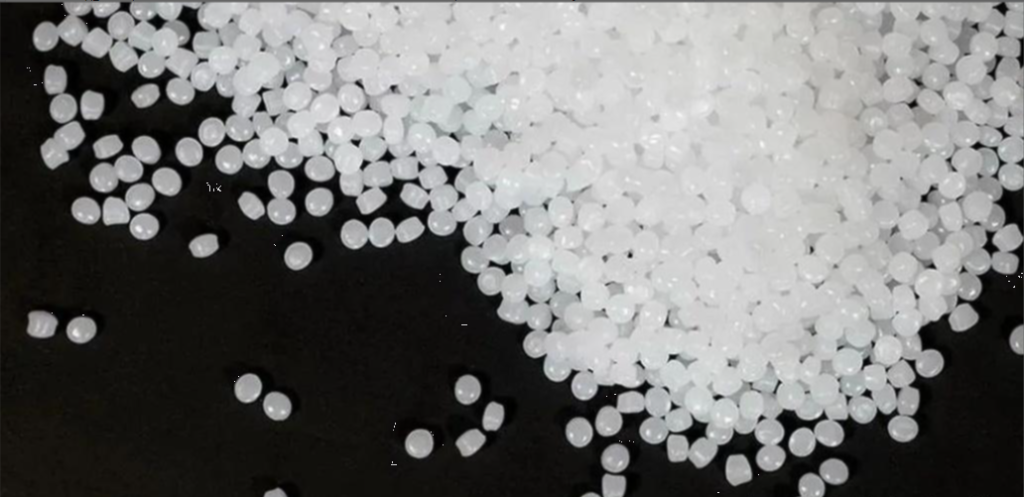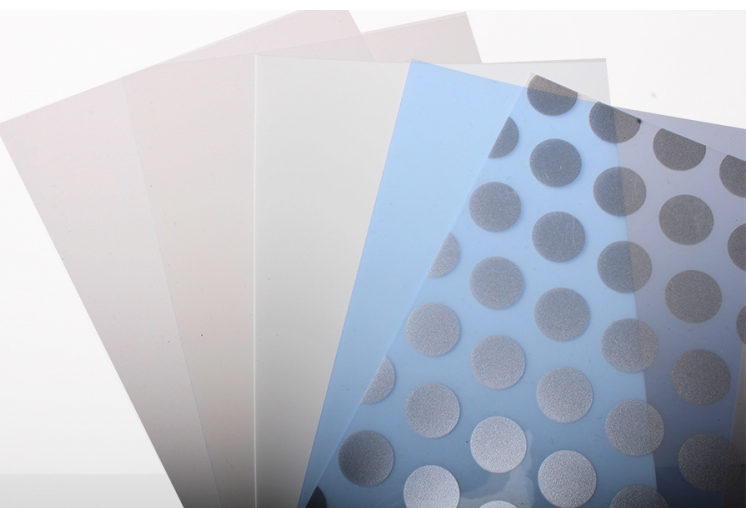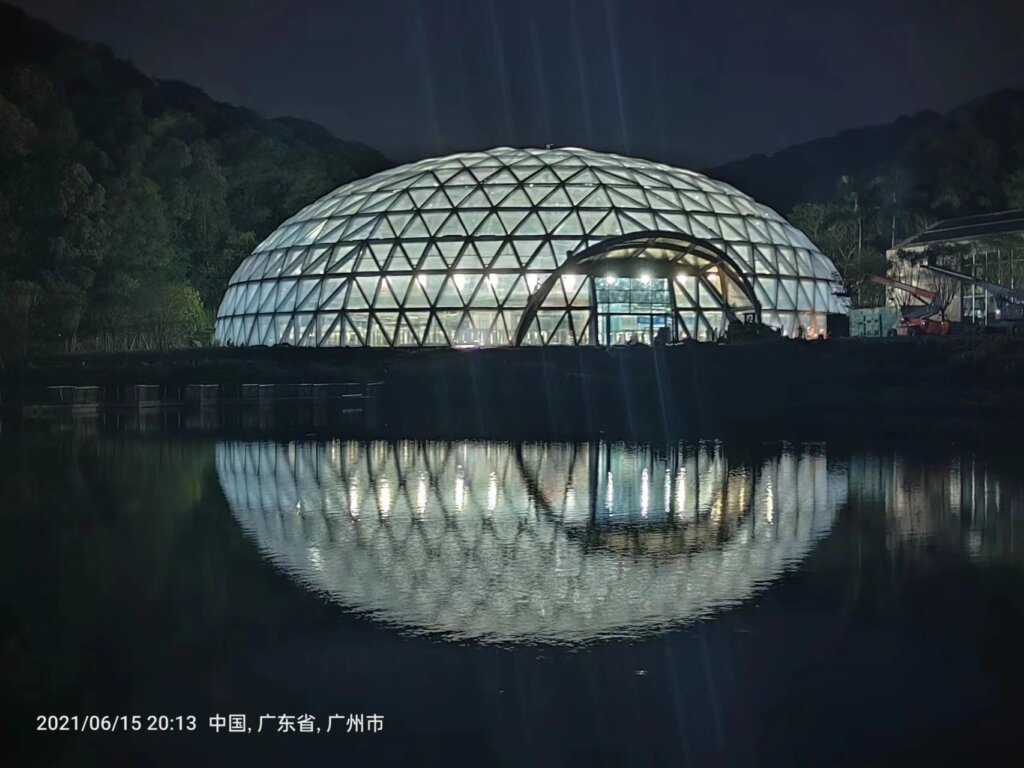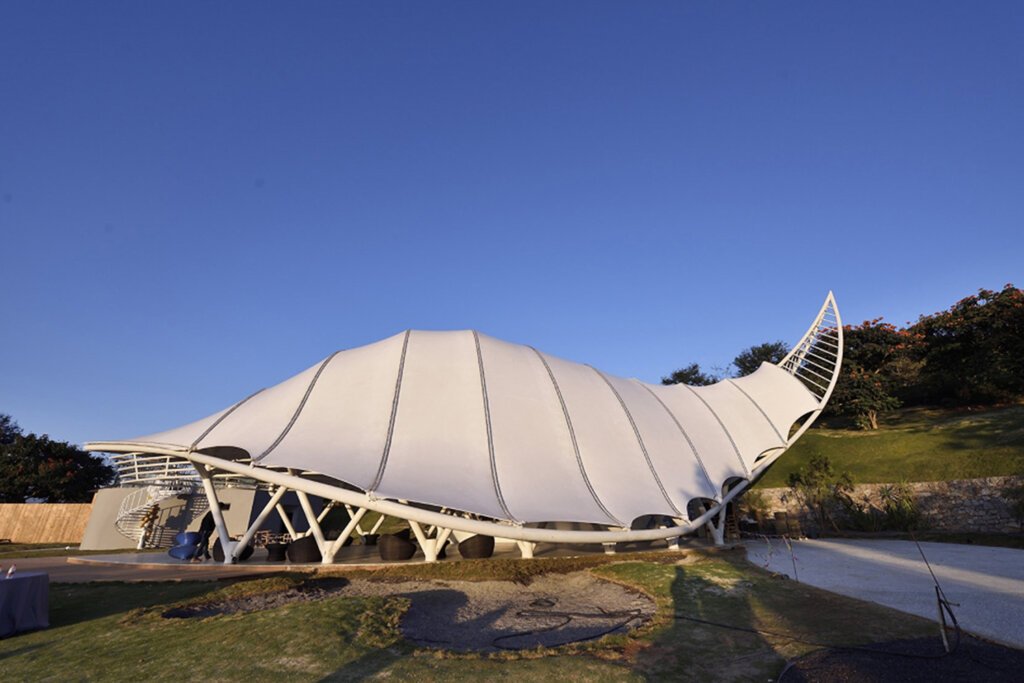ETFE (Ethylene-Tetrafluoroethylene) is a type of polymer material. ETFE film is produced by melting ETFE granules at high temperatures and then extruding them into thin sheets.

When used as a roofing or wall material, the thickness typically ranges from 50 to 300 microns. It has a light transmittance of up to 95%, an elongation of 420% to 440%, and weighs about 1% of an equivalent-sized glass panel. ETFE has a melting point of around 260°C and a lifespan of over 25 years.

Light Transmittance: The light transmission spectrum of ETFE membrane material is similar to that of glass, earning it the nickname “soft glass.” Pure ETFE is colorless and can be processed into transparent films with up to 95% light transmittance. The transparency can also be reduced to 50% through surface printing. Due to its excellent light transmission, ETFE is particularly well-suited for constructing buildings that require artificial simulation of natural environments, such as botanical gardens and sports arenas.

Extensibility: ETFE has an elongation of 420% to 440%. Due to its elasticity, ETFE performs well in natural disasters like earthquakes. It allows the supporting steel structure to be designed for stress rather than deflection, enabling the incorporation of large openings.

Self-Cleaning: This is a common feature of membrane materials, and ETFE excels in this area with its non-adhesive properties, high resistance to dirt, and ease of cleaning. Dust on the surface can be naturally washed away by rainwater. ETFE’s low friction coefficient prevents dust and dirt from adhering to its surface, reducing maintenance requirements. Its low friction also makes it resistant to dirt accumulation and easy to clean.
Lightweight Insulation: Weighing only 1/100th of an equivalent glass panel, ETFE is ideal for light-transmitting roofs and walls, reducing structural load while providing the same insulation as triple glazing. Its low thermal conductivity can be further enhanced by adding more layers.
Fire Resistance: Rated B1 for fire safety, ETFE has a melting point of about 260°C. It doesn’t self-ignite, produce smoke, or create flammable droplets, preventing the spread of fire.
Durability: ETFE is unaffected by UV rays, atmospheric pollution, or environmental weathering. Extensive tests show no signs of aging, discoloration, or brittleness. It doesn’t degrade over time, is easy to recycle, and has a lifespan of 25-35 years or more.
Versatility: ETFE can be shaped into any form and colored by adding pigments, resulting in vibrant films. It supports color tones and can be integrated with photovoltaic or LED systems. ETFE is recyclable, either reused to create new membranes or processed into other products. Damaged ETFE panels can be easily replaced like glass.
